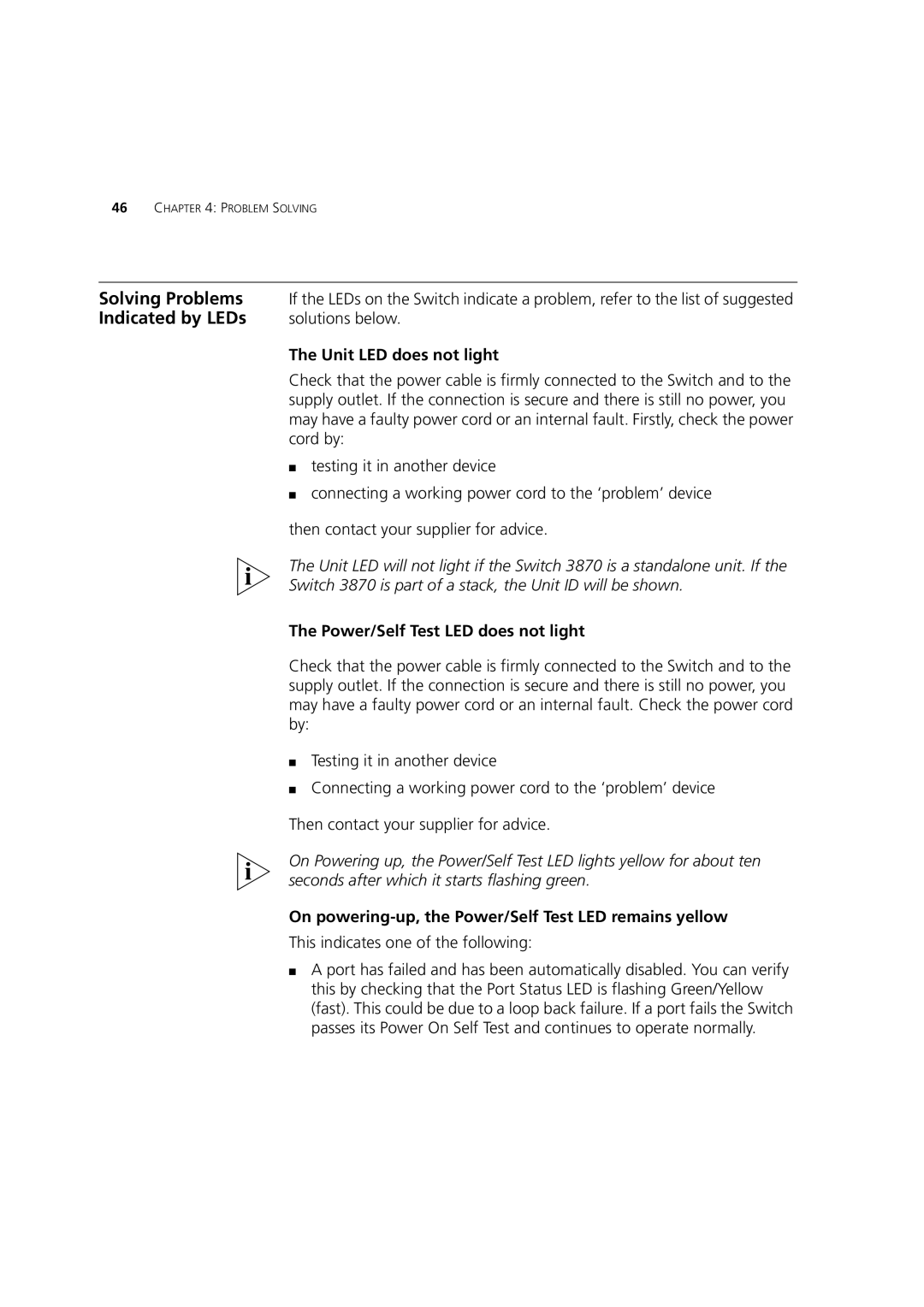
46CHAPTER 4: PROBLEM SOLVING
Solving Problems | If the LEDs on the Switch indicate a problem, refer to the list of suggested |
Indicated by LEDs | solutions below. |
| The Unit LED does not light |
| Check that the power cable is firmly connected to the Switch and to the |
| supply outlet. If the connection is secure and there is still no power, you |
| may have a faulty power cord or an internal fault. Firstly, check the power |
| cord by: |
| ■ testing it in another device |
| ■ connecting a working power cord to the ‘problem’ device |
| then contact your supplier for advice. |
| The Unit LED will not light if the Switch 3870 is a standalone unit. If the |
| Switch 3870 is part of a stack, the Unit ID will be shown. |
| The Power/Self Test LED does not light |
| Check that the power cable is firmly connected to the Switch and to the |
| supply outlet. If the connection is secure and there is still no power, you |
| may have a faulty power cord or an internal fault. Check the power cord |
| by: |
| ■ Testing it in another device |
| ■ Connecting a working power cord to the ‘problem’ device |
| Then contact your supplier for advice. |
| On Powering up, the Power/Self Test LED lights yellow for about ten |
| seconds after which it starts flashing green. |
| On |
| This indicates one of the following: |
| ■ A port has failed and has been automatically disabled. You can verify |
| this by checking that the Port Status LED is flashing Green/Yellow |
| (fast). This could be due to a loop back failure. If a port fails the Switch |
| passes its Power On Self Test and continues to operate normally. |
